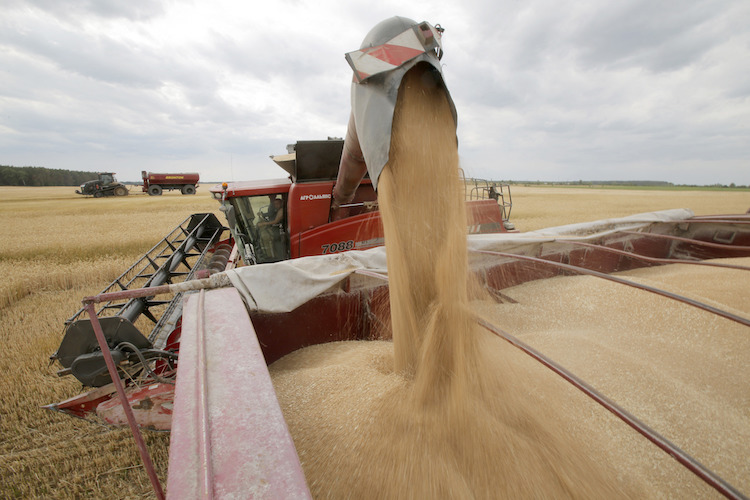By Jeffrey Moyo
HARARE, Zimbabwe (IDN) — Life is no longer the same for Zimbabwe’s shop owner, 34-year-old Richwell Mhasi in the capital Harare who has had to park his car at home, switching to his bicycle, cycling to and from work amid the rising prices of fuel since the beginning of the Russia-Ukraine war this year.
In South Africa’s Musina town closer to the border with Zimbabwe, widowed 43-year-old Laziwe Muleya living in a shack with her three children has now turned to wood fire as she can no longer afford the price of gas for cooking. ARABIC | JAPANESE | SWAHILI
South African parliamentarian, William Madisha has gone on record saying, “this conflict will lead to more unemployment and lower our 2021/2022 gross domestic product (GDP) than previously projected.”.
Already, R77 billion (about $4.8 billion) worth of South African businesses domiciled in Russia has been affected by the latter’s war on Ukraine.
Zimbabwe’s Mhasi and South Africa’s Muleya, could just be the tip of an iceberg.
Petrol in Zimbabwe which used to sell at around $1.32 per litre before the Russia-Ukraine war, shot to 1.64 while diesel which previously sold at $1.29 has become even more expensive, selling at $1.71 per litre.
In fact, John Mangudya Zimbabwe’s central bank chief had forewarned that the ongoing armed conflict between Russia and Ukraine would have a knock-on effect on the prices of goods and services here.
Dingizulu Zwane, a South African independent economic expert said many Africans should brace for more hard times.
“Our countries in the Southern African region have depended so much on imports from Russia and Ukraine, with the production of the imports obviously going down owing to the war and prices are shooting up,” Zwane told IDN.
To this, in Zimbabwe, Claris Madhuku who heads a civil society organization called the Platform for Youth and Community Development (PYCD), quipped: “The elephants are fighting and the grass is suffering.”
With Russia and Ukraine exporting about a quarter of the world’s wheat, wheat prices have been shooting up globally since the start of the war, in Zimbabwe climbing up by nearly 15 per cent in early March from US$595 to about US$682 per metric ton.
Zimbabwe gets at least half of its wheat from Russia.
It is even worse for Mozambique, a country pounded by Cyclone Gombe earlier in March—almost at the same time the Russia-Ukraine war started. This means Mozambicans have had to struggle with the twin hurdles at one go.
“Cooking oil is now very expensive in shops here because we are told some of the raw materials used to produce it were being imported from Ukraine and the war has disturbed the movement of those imports,” Mozambique’s 32-year-old vendor in the country’s Tete Province, Ms. Elna Sinoa, told IDN.
Now, as Mozambique is still nursing wounds from Cyclone Gombe, Christine Beasley, the CARE boss there has bemoaned shortages that have crept into the poor African nation, thanks to the Russia-Ukraine war.
She (Beasley) went on record saying: “Commonly used relief supplies, including tarps and tents, are now difficult to find.”
These, she said, “are being channelled to Ukraine and Poland to meet the massive needs of refugees”.
CARE is a major international humanitarian agency delivering emergency relief and long-term international development projects.
With motorists like Mhasi opting to park their cars now, in Zambia and Zimbabwe, where prior to the Russia-Ukraine war, the economies were already fragile, fuel prices have now increased by 7 per cent and 13 per cent respectively.
Zimbabwe’s independent economist, Denis Munjanja said “our country depends on lots of imports from Russia and Ukraine and automatically it has to suffer as the two elephants fight.”
As it focuses on its war in Ukraine, Russia’s humanitarian activities in Zimbabwe have also stalled.
Just after the war began in Ukraine, Russia in March had made a donation of US$1.5 million to the WFP to help more than 100,000 people in Zimbabwe’s hunger-stricken areas such as Hwange, Nkayi and Zvishavane districts which are among the worst affected by severe drought and food insecurity.
Malawi has also not been spared from bread price hikes, with Amos Zaindi, who is CARE Malawi Country Director going on record in the media saying, “slightly over 20 per cent of the country’s wheat dependency is on imports from Russia”.
Zaindi said, “these hikes and potential job losses are of particular concern to CARE as it risks more people sliding into poverty”.
Namibia also faces a more precarious situation amid galloping bread and fuel prices.
Namibia’s central bank chief Ebson Uanguta has said: “Certainly, some of these key products, like oil and wheat in our case, have a direct bearing on the livelihoods of our people.”
Just north of Zimbabwe, heavily dependent on fuel imports much as it does for its own fertilizer, machinery and other inputs for production, Zambia has not been spared either by the Russia-Ukraine war.
Petrol in Zambia now sells at $1.55 up from $1.29 while diesel now trades at $1.53 up from $1.12.
As Russia and Ukraine fight, other Southern African nations like Angola have also had to catch a cold.
In fact, Angola relies entirely on imported wheat, according to a Global Agricultural Information Network report from the Foreign Agricultural Service of the US Department of Agriculture (USDA).
As such, last year alone, Russia and Ukraine accounted for about 30 per cent of Angola’s wheat imports, which is not anymore. [IDN-InDepthNews – 20 May 2022]
Photo: Africa braces for food price inflation as the Russia-Ukraine war continues. Anatolii STEPANOV / FAO/AFP




